Recombinant Human RPE65 Over-expression Lysate, Myc/DDK-tagged
| Cat.No. : | SPRTN-01HCL |
| Product Overview : | Transient overexpression lysate of chromosome 1 open reading frame 124 (C1orf124), transcript variant 1 with a C-Myc/DDK tag was expressed in HEK293T. Components: 1 vial of 100 μg gene specific transient over-expression cell lysate in RIPA buffer 1 vial of 100 μg whole HEK293T cell lysate in RIPA buffer 1 vial of 250ul 2xSDS Sample Buffer (4% SDS, 125mM Tris-HCl pH6.8, 10% Glycerol, 0.002% Bromophenol blue, 100mM DTT) |
- Specification
- Gene Information
- Related Products
- Case Study
- Application
- Download
| Species : | Human |
| Source : | HEK293 |
| Tag : | DDK&Myc |
| Description : | The protein encoded by this gene may play a role in DNA repair during replication of damaged DNA. This protein recruits valosin containing protein (p97) to stalled DNA replication forks where it may prevent excessive translesional DNA synthesis and limit the number of DNA-damage induced mutations. It may also be involved in replication-related G2/M-checkpoint regulation. Deficiency of a similar protein in mouse causes chromosomal instability and progeroid phenotypes. Mutations in this gene have been associated with Ruijs-Aalfs syndrome (RJALS). Alternatively spliced transcript variants have been identified. |
| Molecular Mass : | 55 kDa |
| Stability : | Lysate samples are stable for 12 months from the date of receipt when stored at -80 centigrade. |
| Storage : | Upon receiving, store the sample at -80 centigrade. Also after dilution, the protein sample should be aliquoted and stored at -80 centigrade for long term storage. Avoid repeated freeze-thaw cycles. |
| Storage Buffer : | Lysate samples can be diluted with 2×SDS Sample Buffer provided. |
| Shipping : | Dry ice. |
| Gene Name | SPRTN SprT-like N-terminal domain [ Homo sapiens (human) ] |
| Official Symbol | SPRTN |
| Synonyms | SPRTN; SprT-like N-terminal domain; DVC1; PRO4323; spartan; C1orf124; DNA-dependent metalloprotease SPRTN; DNA damage protein targeting VCP; DNA damage-targeting VCP (p97) adaptor; zinc finger RAD18 domain-containing protein |
| Gene ID | 83932 |
| mRNA Refseq | NM_032018 |
| Protein Refseq | NP_114407 |
| MIM | 616086 |
| UniProt ID | Q9H040 |
| ◆ Recombinant Proteins | ||
| SPRTN-1356H | Recombinant Human SPRTN | +Inquiry |
| SPRTN-15942M | Recombinant Mouse SPRTN Protein | +Inquiry |
| SPRTN-4142H | Recombinant Human SPRTN Protein, His (Fc)-Avi-tagged | +Inquiry |
| SPRTN-8689M | Recombinant Mouse SPRTN Protein, His (Fc)-Avi-tagged | +Inquiry |
| SPRTN-01HCL | Recombinant Human RPE65 Over-expression Lysate, Myc/DDK-tagged | +Inquiry |
| ◆ Cell & Tissue Lysates | ||
| SPRTN-222HCL | Recombinant Human SPRTN cell lysate | +Inquiry |
Case 1: Batel A, et al. Cancer Gene Ther. 2024
Accumulation of misfolded proteins in the endoplasmic reticulum (ER) activates the unfolded protein response (UPR) to maintain ER homeostasis, a process associated with hepatocellular carcinoma (HCC) development. A mutation in the SPRTN gene is linked to early HCC onset, but its mechanism is not fully understood. This study analyzed SPRTN and UPR in 21 HCC tissue samples and found changes in SPRTN and UPR gene and protein expression. Here SPRTN interacts with the UPR sensor GRP78 and that SPRTN depletion increases ER stress sensitivity. This suggests SPRTN plays a crucial role in the ER stress response and could advance our understanding and treatment of HCC.
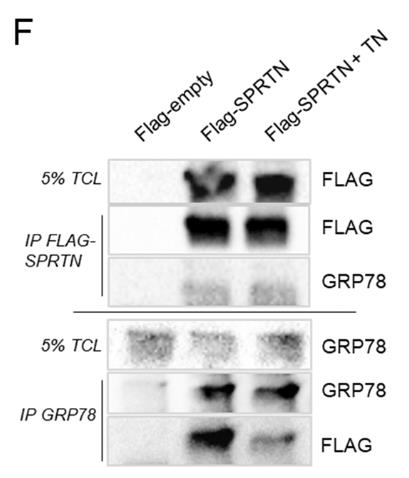
Fig1. Flag-tagged SPRTN or Flag empty vectors were expressed in HeLa cells treated or untreated with 1 μM tunicamycin.
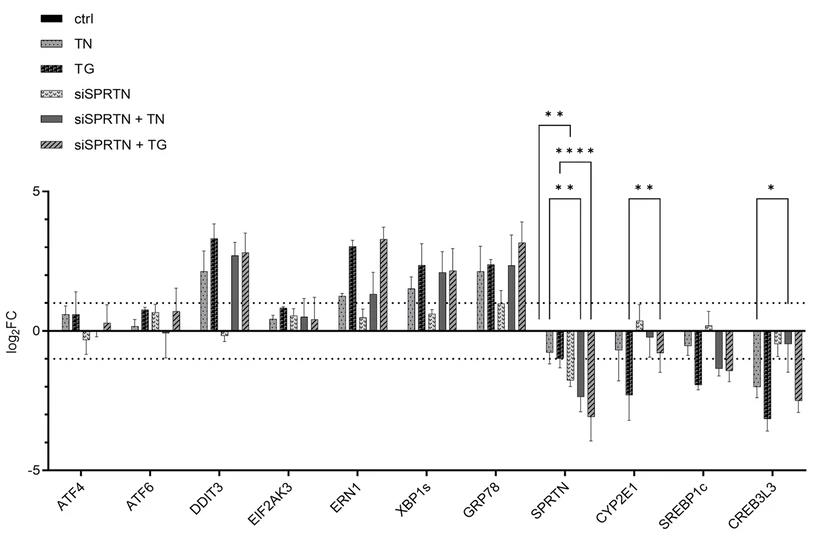
Fig2. The expression level of UPR and lipid metabolism genes in HepG2 cells treated with siRNA-SPRTN and TN or TG.
Case 2: Fielden J, et al. Nat Commun. 2020
Eukaryotic topoisomerase 1 (TOP1) manages DNA topology for efficient replication and transcription but can cause genome instability when its intermediate, the TOP1 cleavage complex (TOP1cc), is stabilized. TOP1ccs are cytotoxic and are targeted in cancer therapies, with TDP1 being crucial for resolving them. However, the processing of the large TOP1 protein before TDP1 action was unclear. This study reveals that TEX264, in complex with p97 ATPase and SPRTN metalloprotease, initiates TOP1cc repair by recognizing and recruiting TOP1, whether unmodified or SUMO1-modified. TEX264 localizes to the nuclear periphery, interacts with DNA replication forks, and mitigates TOP1ccs during replication.
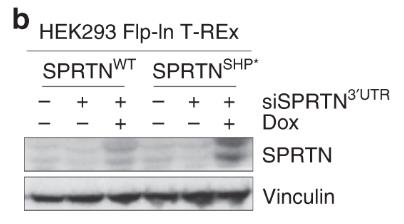
Fig1. Immunoblots to confirm SPRTN depletion/induction in doxycycline (Dox)-inducible HEK293 Flp-In T-REx cells.
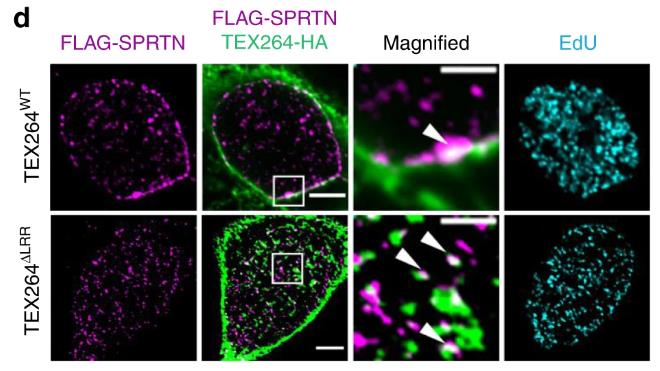
Fig2. Except cells were co-transfected with FLAG-tagged SPRTN and co-stained with an anti-FLAG antibody.
Recombinant Human SPRTN Protein, also known as Spartan, is a protein encoded by the SPRTN gene and plays a crucial role in DNA repair, particularly in resolving crosslink damages during DNA replication. It acts as a protease involved in deubiquitination, regulating DNA damage response mechanisms, and maintaining genomic stability and normal cell cycle progression. Due to these functions, SPRTN is associated with cell proliferation, aging, and has potential implications in diseases like cancer.
The applications of SPRTN protein include cancer research, where understanding its function could lead to new cancer treatments; genomic stability studies, making it an ideal subject for exploring gene mutations and genome editing technologies; aging research, due to its potential role in DNA repair efficiency decline; drug development, as a potential target for diseases related to DNA repair defects; and toxicology studies, to assess the risk of chemical-induced DNA damage. The production of recombinant SPRTN protein in labs allows researchers to delve deeper into its structure, function, and roles in various cellular processes, advancing scientific research and applications in related fields.
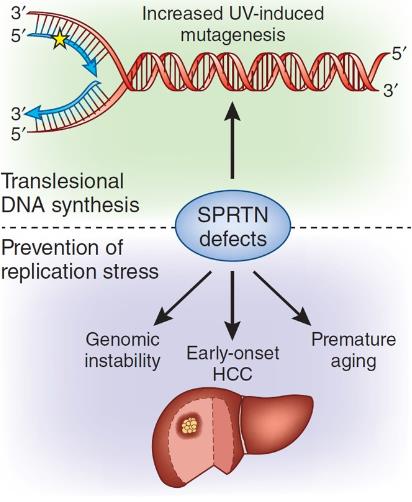
Fig1. The dual roles of SPRTN. (Kevin Hiom, 2014)
Not For Human Consumption!
Inquiry
- Reviews
- Q&As
Ask a Question for All SPRTN Products
Required fields are marked with *
My Review for All SPRTN Products
Required fields are marked with *
Inquiry Basket


